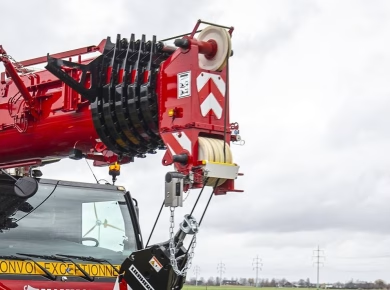Every day on construction sites across the country, safety barriers stand guard, ostensibly protecting workers from hazards and preventing accidents. However, a troubling reality often emerges: many of these barriers are mere decorations, lacking the functionality and effectiveness needed to truly safeguard employees. As someone who has worked on numerous projects in various capacities, I can attest to the frustration of seeing well-intentioned safety measures fall short due to a lack of proper implementation and understanding. It’s time we take a closer look at these barriers, assess their true purpose, and ensure they serve as more than just a visual cue.
Understanding the True Purpose of Safety Barriers
Safety barriers are designed to mitigate risk by preventing unauthorized access to hazardous areas and protecting workers from potential dangers. They are not just colorful plastic or metal structures; they are critical components of a comprehensive safety strategy. When barriers are treated as mere decorations, the underlying message is that safety is an afterthought. This mindset can lead to catastrophic results.
Consider a construction site where a safety barrier is placed around a deep excavation. If that barrier is flimsy, poorly positioned, or easily breached, it does little to protect workers from falling into the pit. In my experience, I’ve seen barriers that are installed without proper training or understanding of site-specific risks. This not only compromises safety but also fosters a culture where compliance is seen as a checkbox rather than a serious commitment.
Real-World Challenges with Safety Barriers
One common challenge is the misconception that simply placing a barrier is enough to ensure safety. Many site managers believe that once a barrier is in place, the job is done. This oversight can lead to complacency among workers, who might feel a false sense of security. In reality, barriers require regular inspection, maintenance, and, when necessary, replacement.
During a recent project, I witnessed a scenario where a construction team had set up a series of barriers around a hazardous area. However, after a few weeks, the barriers were neglected, and some were even knocked over or moved. Workers began to ignore them altogether, leading to increased risk. This incident reinforced the importance of not just having barriers but actively managing them. A safety barrier should be a dynamic element of the site’s safety protocol, not a static one.
Evaluating Your Safety Barriers
To ensure that safety barriers are more than just decorations, it’s essential to evaluate their effectiveness regularly. Here are some key aspects to consider:
Material and Design
The materials used in your safety barriers should be durable and appropriate for the specific hazards present on your site. For example, lightweight plastic barriers may be suitable for delineating pedestrian pathways but not for high-risk zones like heavy machinery operations. Investing in high-quality materials can prevent barriers from deteriorating or becoming ineffective.
Placement and Visibility
Barriers must be strategically placed to be effective. They should not only be visible but also serve a clear purpose. Use reflective tape or brightly colored materials to enhance visibility, especially in low-light conditions. During a night shift on one of my projects, we noticed that poorly lit areas made barriers hard to see, increasing the risk of accidents. A simple solution was to add lighting around critical zones, improving overall safety.
Regular Training and Communication
Education is key to ensuring that workers understand the purpose and importance of safety barriers. Conduct regular training sessions that highlight the role of barriers in preventing accidents. Encourage open communication about any issues or concerns related to barrier effectiveness. Workers should feel empowered to report when barriers are damaged or inadequately placed.
Integrating Technology into Safety Barrier Management
As technology advances, integrating digital solutions into safety management can significantly enhance the effectiveness of barriers. For instance, using mobile apps for real-time monitoring can help track the condition of barriers and any incidents related to them.
Utilizing Smart Barriers
Innovative solutions like smart barriers equipped with sensors can provide alerts when a barrier is breached or when it’s been moved. This technology can be particularly beneficial on sites where access control is crucial. During a recent site audit, we discussed the potential of incorporating such technology to elevate our safety protocols.
Creating a Culture of Safety
Ultimately, the effectiveness of safety barriers is deeply rooted in the culture surrounding safety on the site. A commitment to safety should permeate every level of the organization, from management to frontline workers.
Leadership Commitment
Leadership plays a critical role in establishing a safety-first culture. When managers prioritize safety and demonstrate that barriers are more than just decorations, it sets a precedent for everyone else. Recognizing and rewarding safe behavior, such as consistent barrier use and reporting hazards, can reinforce the importance of these measures.
Employee Engagement
Engaging employees in safety discussions fosters a sense of ownership and responsibility. Encourage team members to participate in safety audits and to voice their opinions on barrier effectiveness. This involvement not only improves safety but also boosts morale and teamwork.
Conclusion: Moving Beyond Decoration
The responsibility to ensure that safety barriers are effective and not just decorative lies with all of us in the construction and safety industries. It requires a collective effort to evaluate, educate, and engage in meaningful safety practices. By recognizing the critical role that barriers play in protecting lives and preventing accidents, we can shift the mindset from compliance to a committed culture of safety. Let’s take the time to assess our practices, invest in quality materials, and foster open communication. Together, we can ensure that our safety barriers are not merely present but are truly protective measures that save lives and enhance the well-being of everyone on the site.


